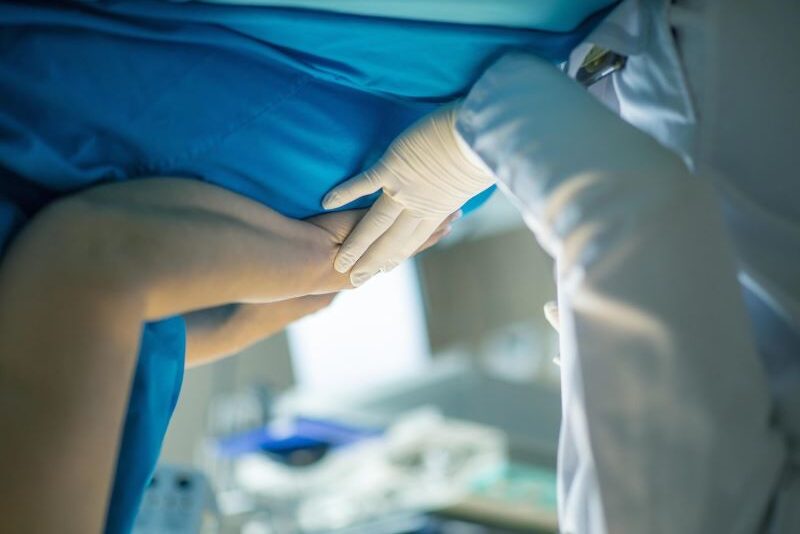Non-surgical treatments are a step up from surgery or medications that only create temporary changes to your condition. Your symptoms may increase or decrease when you take these treatments. Your doctor can advise you on managing these symptoms and caring for yourself during this time. Before choosing a non-surgical treatment option, talk with your doctor about the risks and benefits of each one. Here are some of the non-surgical treatments to ask your doctor about.

1. Diuretics
Diuretics often treat overactive bladder symptoms, including urgency, frequency, and incontinence (leaking urine). Diuretics increase urine output. They may also thin out your blood and help remove toxins from your body through urination. Your doctor might prescribe diuretics if you have a problem with urination that is not caused by a urinary tract infection or other more serious conditions.
2. Muscle Relaxants
Muscle relaxants help to relieve stiffness and pain from muscle cramps. They also help to reduce the number of spasms an individual may be experiencing. They might be used to treat symptoms of overactive bladder, such as a sudden feeling that you need to urinate or deal with prostate enlargement.
This treatment also helps prevent spasms caused by a sudden increase in activity, such as at the beginning of a football season. Joint muscle relaxants include tizanidine (Zanaflex), baclofen (Lioresal), and diazepam (Valium).
3. Uterine Fibroid Treatment
Fibroids are usually benign growths located in the uterus, but they can cause symptoms such as pelvic pressure, heavy menstrual bleeding, and pain during sexual intercourse. In most cases, fibroids do not need treatment. But, if you are experiencing significant symptoms or you want to try to prevent the growth of larger fibroids, your doctor may treat them with uterine fibroid embolization (UFE), hysteroscopic myomectomy (fibroid removal), or a hysterectomy (uterus removal).
Uterine fibroid treatment in Memphis, TN, and the surrounding areas may be available, depending on your condition and treatment options. If you have fibroids and are experiencing symptoms, talk to your doctor about uterine fibroid treatment.
4. Exercise/Physical Therapy
Exercise is a good way to relieve stress and help you lose weight. This can help reduce pressure on your bladder and prostate if you have an enlarged prostate. If you have an overactive bladder, exercise and physical therapy can help improve muscle tone, pelvic floor muscle control, and coordination of the muscles that allow you to urinate normally.
Exercise may also assist in reducing stress or other factors that might cause symptoms of an overactive bladder. Physical therapy may involve pelvic floor exercises that strengthen the muscles around your urethra and bladder. Your doctor may also recommend other forms of physical therapy, such as working with a physical therapist trained in bladder muscle training.
5. Hemorrhoid Treatments
Anal fissures are small tears in the lining of the anus caused by straining during a bowel movement. The fissure becomes worse when you strain, and it soon heals on its own. But if the fissure does not heal within three weeks, you may need treatment to reduce your pain and bleeding. Your doctor may recommend sclerotherapy, a procedure that involves injecting chemicals into the fissure.
Cryotherapy may be used to remove dried blood, followed by the application of cooled liquid. Steroid injections may be used to help keep your fissure from healing prematurely. Your doctor can also recommend hemorrhoid bandages or a topical cream that you can apply to the area if you need treatment for an anal fissure.
6. Local Injectables
If you are suffering from pain caused by your condition and need to relieve specific areas of your body, local injectables might be an option. Injectable treatments, such as collagenase clostridium histolyticum (CCH), use injections to dissolve fibroids and help shrink or remove them. CCH is currently being studied in clinical trials to determine if it can be used to treat uterine fibroids in women.
This treatment is only available in some areas. Your doctor can recommend the right procedure for you based on your condition and the location of your fibroids.
7. Botulinum Toxin (Botox)
Botox is a medicine that can relax muscles in the body to reduce spasms caused by an overactive bladder. The treatment itself is not painful and is used only once or twice a year, depending on your condition and doctor’s recommendations.
Botox is most often used to treat symptoms of overactive bladder, including urinary frequency and incontinence (leaking urine). This treatment may also be used to help manage urgency and urge incontinence.
Conclusion
Non-surgical treatments are effective options for treating overactive bladder, but they do not cure the problem. These treatments give you a way to manage your symptoms and provide relief when you need it.
If you are concerned about the symptoms of your overactive bladder or if they are causing other serious problems in your life, talk to your doctor about these treatment options. Your doctor can help you decide which non-surgical treatment is right for you by considering your overall health, lifestyle, personal preferences, and the severity of your condition.
 Infographic Portal New Infographics Resource Portal
Infographic Portal New Infographics Resource Portal
